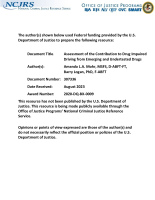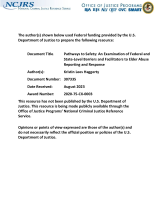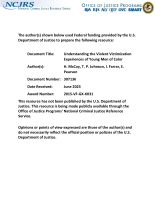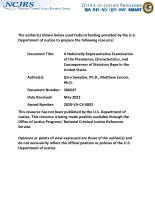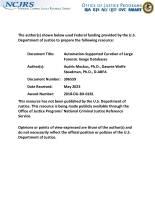Data analysis
We Met Them Where They Are, But Is It Enough? A Qualitative Examination Of A Co-Response Outreach Program Servicing Vulnerable Populations in Philadelphia
PRISONERS ON THE MOVE: EXAMINING THE NATURE AND EFFECTS OF PRISON TRANSIENCY ON INCARCERATED INDIVIDUALS
Extreme Risk Protection Orders in Washington State and their Impact on Firearm-Related Arrests and Convictions
Mapping the Continuum of Support for Violent Extremism in the United States
Domestic Terrorism Targeting America’s Political Elites
Military Sexual Trauma Experiences of Female Veterans in Michigan
Inclusive Research: Engaging People Closest to the Issue Makes for Better Science & Greater Impact; 2023 NIJ Research Conference Plenary
This panel will discuss what inclusive research is, how to conduct it, and what issues and challenges exist about engaging in it. “Inclusive research” has its history as a participatory research method designed to ensure people closest to the issue or problem under study are authentically engaged in the research process rather than simply being “research subjects.” While community-based participatory research has begun to take on greater prominence in the criminal justice realm, such efforts are largely confined to qualitative research inquiries.
See the YouTube Terms of Service and Google Privacy Policy



